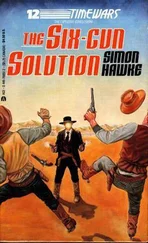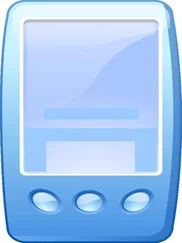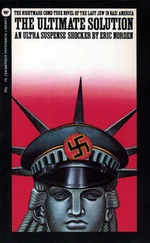The Medical Use of Ibogaine
Another psychedelic drug presently receiving much scientific scrutiny over its possible medical utilization is ibogaine, an alkaloid derived from the West African plant Tabernanthe iboga . The plant is employed in situ by members of the Bwiti cult, a religious society found in Gabon and the Congo, who use it in much the same way psilocybin mushrooms and ayahuasca are traditionally used. The aim is to free the soul to connect with God and the ancestors. Here is a typical report from a native African user: “I wanted to know God—to know things of the dead and the land beyond…. I walked or flew over a long, multicolored road or over many rivers which led me to my ancestors, who then took me to the great gods.” {21} 21 1. Schultes, Evans, and Hofmann, Plants of the Gods, 112.
Ironically, perhaps, scientists have now established that the psychological effects of ibogaine can be used to break hard drug addiction. In the mid-1980s, Howard Lotsof, an ex-junkie cured through his experiences with ibogaine, formed a company to promote the medical use of ibogaine. So assured was he of ibogaine’s capacity to break drug addiction, that Lotsof patented ibogaine treatments in the mid-1980s. Apparently, it is the unusually intense and personally significant visionary effects of ibogaine that can break the curse of hard drug addiction. Lotsof describes the visions induced by ibogaine in patients he has treated as being like movie clips: “The presentation of visual material is rapid. Some patients have described it as a movie run at high speed. Others describe it as a slide show, each slide containing a motion picture of a specific event or circumstance in the viewer’s life.” {22} 22 2. Lotsof, “Ibogaine in the Treatment of Chemical Dependence Disorders,” www.maps.org/news-letters/v05n3/05316ibo.html (accessed March 11, 2011).
Once more, we see the capacity of entheogens to instigate dramatic visionary experiences within the human psyche. Lotsof refers to these movie-clip visions as having Freudian and Jungian connotations, as if they could convey deep and significant meaning to the experiencer, and he infers that it is this process that lies at the heart of ibogaine’s efficacy in breaking patterns of addiction. Lotsof believes that ibogaine is able to make patients reevaluate their lives and see the mistakes that they may have made and that may have led them into uncontrollable bouts of drug-taking. After treatment with a single dose of ibogaine, the majority of patients remain free from chemical dependence for three to six months, which indicates that ibogaine therapy needs to be ongoing and, if possible, be accompanied by other treatments. Interestingly, a recent BBC television documentary named Tribe showed intrepid explorer Bruce Parry taking part in a lengthy and sometimes harrowing Iboga religious ritual in Gabon. Parry reported that the Iboga plant allowed him to view his life from the perspective of those to whom he had caused emotional pain. After the Iboga rite was completed, Parry felt truly reborn.
A leading figure in the second wave of psychedelic research is Dr. Rick Strassman, a psychiatrist who carried out some remarkable studies at the University of New Mexico in the mid-1990s. A look at his groundbreaking research reveals the spirit of a scientist determined to break through political bureaucracy in order to advance the frontiers of knowledge and add to the pharmaceutical armory of the practicing psychiatrist.
Strassman’s work has centered on the prototypical entheogen dimethyltryptamine (DMT). Recall that DMT is a naturally occurring substance employed for millennia in the botanical potions and snuffs utilized by native Amazonian shamans. Classed as an ultra-short-acting hallucinogen, DMT, when administered intravenously to humans (as opposed to the drinking of an ayahuasca brew), causes fantastic alterations in consciousness and yet is completely inactive within thirty minutes (the effects of ayahuasca can last for hours). If DMT is smoked, the experience is even shorter, sometimes lasting less than five minutes.
Because DMT is believed, strangely enough, to occur naturally in the human brain (trace amounts have been found in blood, urine, and spinal fluid, and precursor enzymes for it have been found in brain tissue), it was apparent to Strassman that an understanding of its action might shed some light on the development and possible treatment of endogenous hallucinatory conditions like schizophrenia. It is in this way that clinical science comes to make antipsychotic drugs, substances that can block pathological forms of thought. Once you understand the neurochemical events that accompany abnormal states of mind, then you are in a position to develop drugs to treat such conditions.
Despite his purely clinical leanings, Strassman was also interested in using DMT to explore the ever-more-popular brain/mind issue. This murky area of science—which we shall be returning to in later chapters—is concerned with how the physiochemical brain (the unsightly mass of gray jellylike stuff in our skulls) is related to the nonphysical mind with all its attendant thoughts, ideas, fears, beliefs, and so on. What exactly is the connection? Strassman argues that because psychedelic drugs alter consciousness, they should be able to tell us something about how consciousness is formed in the normal brain. In other words, since psychedelics alter higher cognitive functions connected with what it is to be a conscious human being, then they can essentially be employed as probes to study the mind/brain interface. This is, of course, exactly the point I outlined in the prologue of this book.
It took Strassman two long years to secure permission to carry out DMT studies with humans (experienced psychedelic users were utilized, as this was deemed more ethical). Indeed, this magnitude of effort probably explains the current lack of human-based hallucinogen research. A look at Strassman’s struggle reveals the horrendous bureaucratic forces (a kind of lingering cultural symptom of the 1960s) that face the potential psychedelic researcher. Strassman had to get permission from all sorts of official bodies, such as the formidable Drug Enforcement Agency (DEA) and the Food and Drug Administration (FDA), not to mention the numerous ethical bodies that serve to monitor human-based experimentation.
Two years of uphill struggle and Strassman finally acquired all the necessary permission to perform a DMT study. The remarkable results were subsequently published in reputable but specialized scientific journals, a bit like planting the seeds of a new paradigm underground. Perhaps the most interesting finding concerned the subjects’ reports on what the (intravenously injected) DMT experience was like. As with psilocybin, the effects of DMT warrant our attention if we are interested in the latent potential of human consciousness to transcend “normal” reality. In Strassman’s own words:
Several aspects of DMT’s effects are interesting. The rapidity of onset is quite remarkable; nearly instantaneous when given intravenously. Also the short duration is remarkable; people are quite over the inebriation within 20 to 25 minutes. Many people describe an “intelligence” within the DMT state, which is either just “felt” or “sensed” and sometimes actually “seen” with the mind’s eye. People often lose insight into their participation in a drug study for several minutes, forgetting how they got into the mental state they find themselves so suddenly thrust into. {23} 23 3. Strassman, personal e-mail communication.
As with its close structural relative psilocybin (molecules of these two compounds are only a few atoms different from one another), subjects reported that the DMT experience felt more real than normal reality. Indeed, it is presumably this novel reality encountered through DMT, especially with regard to the perceived contact with an “intelligent Other,” that has led to the use of DMT-containing plants by Amazonian shamans. As already noted, shamans consistently claim that their DMT-containing concoctions put them in direct contact with a transcendental dimension infused with intentionality. What makes this even more intriguing is that Western DMT users report similar experiences. Consider this lucid report from author Daniel Pinchbeck, author of Breaking Open the Head.
Читать дальше










